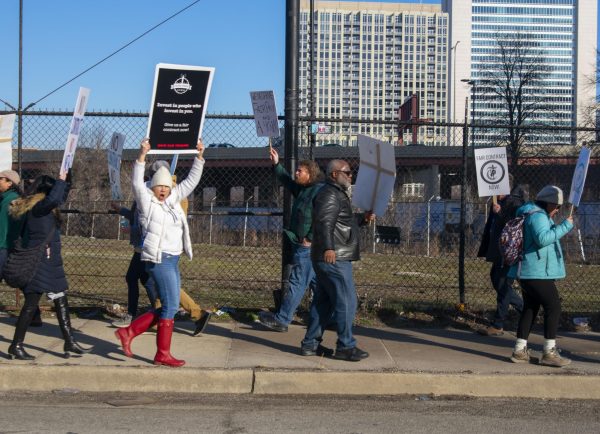Critics say CTA policy unfair to homeless
December 8, 2008
At some time or another, most regular el riders have seen a homeless person sleeping on a train car at night. As winter settles in and temperatures drop, CTA cars frequently become temporary shelter for many of Chicago’s homeless seeking an escape from the elements.
But recently, the CTA has been posting new signs at its 24-hour terminals to inform riders that continuous train-riding is prohibited. The policy-which states that all customers must exit the train at the end of the line and if passengers want to continue to ride then they must pay an additional fare-is not new and has been in place for years. Lately, however, the CTA has decided to step up the rule’s enforcement, which some advocates say is an action directed specifically at the homeless.
“Who else rides the train continuously?” said Julie Dworkin, director of policy for the Chicago Coalition for the Homeless. “Honestly, there would be no reason to ride to the end of the line and back unless you were trying to stay warm and had nowhere else to go.”
According to CTA spokesperson Katelyn Thrall, the policy is not directed at any specific group, and the signs were installed to remind CTA customers of the policy. The policy itself has been in existence for many years, she said, and is an aid to law enforcement in dealing with rule violators.
“CTA does not make a distinction between homeless and any other fare-paying customers,” Thrall said in an e-mailed response. “All individuals who pay fares are afforded the same rights on public transit as long as they are not violating any CTA ordinances or breaking any laws.”
Dworkin said that while she understands this is the CTA’s policy and that they have budget constraints and want people to pay for their rides, it is not going to cost anything to have people riding on the train all night, especially in the middle of the night when trains are mostly empty.
“To me, it just seems cruel,” Dworkin said. “I feel like, why at this time, when people are hurting the most and the weather is getting the coldest, are you going to choose to start enforcing this policy?”
The CTA considers continuous riding of trains “a theft of CTA service,” Thrall said, and operators have always informed customers to exit at the end of train lines.
Mike Doyle, editor and publisher of ChicagoCarless.com, a Chicago-centric blog, wrote about what he called the “CTA’s holiday homeless harassment” on his website and under his byline on the national political blog, HuffingtonPost.com.
Doyle said he thinks part of the reason the CTA wants to increase enforcement is to maintain its growing ridership, particularly in these turbulent economic times.
“They want to make the system as tidy and customer-friendly as possible,” Doyle said. “And I think somebody at the CTA decided one of the ways to do that would be to make sure they keep homeless people riding trains to a minimum this winter.”
But some feel the CTA is justified as long as they enforce the rule consistently.
Kevin O’Neil, publisher of the transit-watchdog blog CTATattler.com, said if the law is going to be enforced he would like to see the CTA work with social service agencies to get referrals for the homeless riders.
“The homeless problem is not for the CTA to fix,” O’Neil said. “And turning your back on continuous riders is not fixing any problems. It’s just allowing something to happen that is illegal.”

















